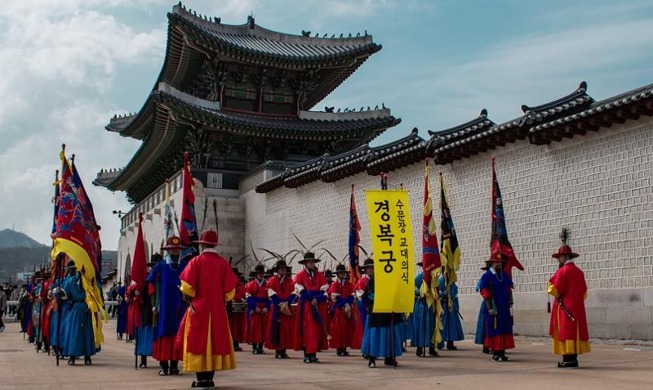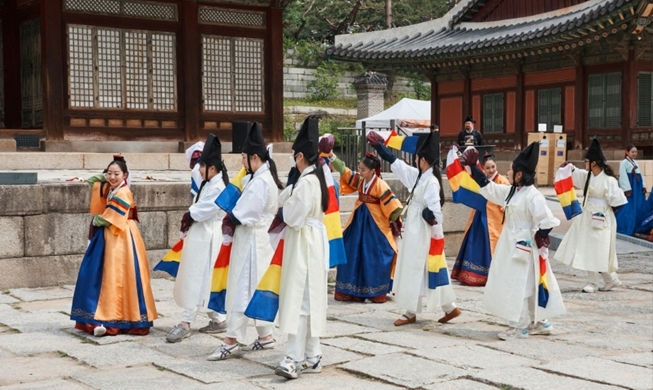-
 Korea.net's 24-hour YouTube channel
Korea.net's 24-hour YouTube channel- NEWS FOCUS
- ABOUT KOREA
- EVENTS
- RESOURCES
- GOVERNMENT
- ABOUT US
- 한국어
- English
- 日本語
- 中文
- العربية
- Español
- Français
- Deutsch
- Pусский
- Tiếng Việt
- Indonesian
|
Culture review section of Monthly KOREA’s March 2020 issue. ▶ Link to Webzine |
Magic of Traditional Masks
There is almost certainly no souvenir more beloved among craft-loving travelers to Korea than the tal (mask). And perhaps the only thing more intriguing about these distinctive wooden, handmade and hand-painted marvels is their evocative history. Far more than eye-catching novelties, these incredible masks boast a thousand-year-old story of class struggle, mysticism and spirituality.
Written by Tim Alper

Discovering the secrets of tal (mask) means diving into Korea’s past and a magic-filled world far removed from the usual tales of kings, queens and heroic nobles.
In modern-day Korea, perhaps the best place to find tal is Seoul’s vibrant Insa-dong district, where government-recognized artisans still tirelessly work on handmade pieces, selling their wares to mostly overseas buyers.
What most tourists are unaware of, however, is that selling tal is a modern development. In the masks’ heyday, the painstaking process of making tal was followed by a seemingly unspeakable orgy of destruction. The masks were single-use items that were carefully crafted, used just once and then burned on a raging bonfire.
Historians know relatively little about the exact origins of tal and the lively talchum (masked dance) performances they were used in. Cultural explorers can find invaluable clues, however, in the traditional heartland of tal: Andong’s Hahoe Village in Andong, Gyeongsangbuk-do Province, the home of hahoetal (Hahoe mask).
Mask Folklore
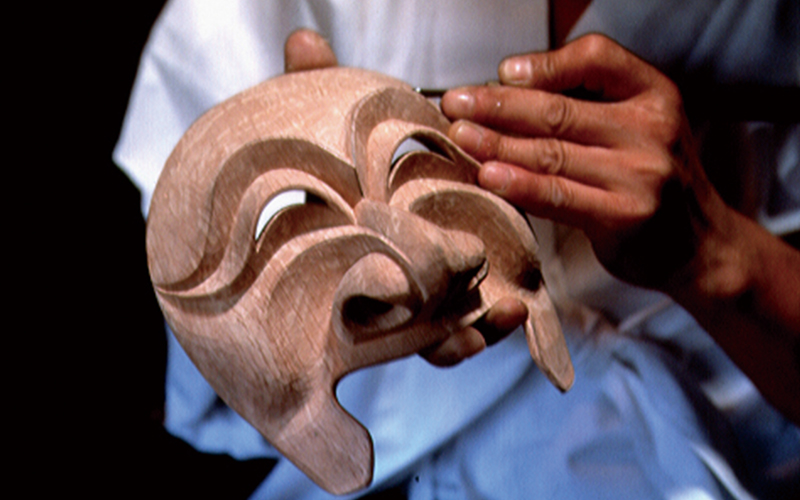
Hahoe masks were created to exude a variety of expressions based on movement and angles. © ehistory.go.kr
Although there were once scores of regional variations of tal, the hahoetal types are now the best known. Visitors to Andong Hahoe Village can still watch mask performances — an energetic blend of dance, music and drama — every week at no charge.
Andong residents still tell an age-old folk tale about the origins of their fantastic masks. The tale is set some 1,000 years ago in a village devastated by hunger and suffering.
One day, the village spirit visited a talented carpenter named Heo in a dream. The spirit told him to craft 12 wooden masks and perform a ritual. Doing so, said the spirit, would allow the village’s suffering to end.
However, the spirit added a caveat: Heo must not allow anyone to see the masks before their completion.
When Heo awoke, he locked all of his doors and worked without rest on the task, toiling day and night and going without both food and drink.
Meanwhile, a young female villager who secretly loved Heo was worried about the artisan, having not seen him in days. With trepidation, she snuck up on his house. Finding all the doors closed tight, she decided to poke a small hole in the thick Hanji (traditional paper) walls to look inside.
Her timing was ill-fated. As she looked in at him, Heo was putting the final touches on the chin piece of the 12th mask, that of the fool. When her gaze fell upon him, Heo died immediately. The heartbroken woman could not live without her beloved and took her own life.
To this day, the Hahoe fool’s mask is the only one with no chin piece.
Original K-dance
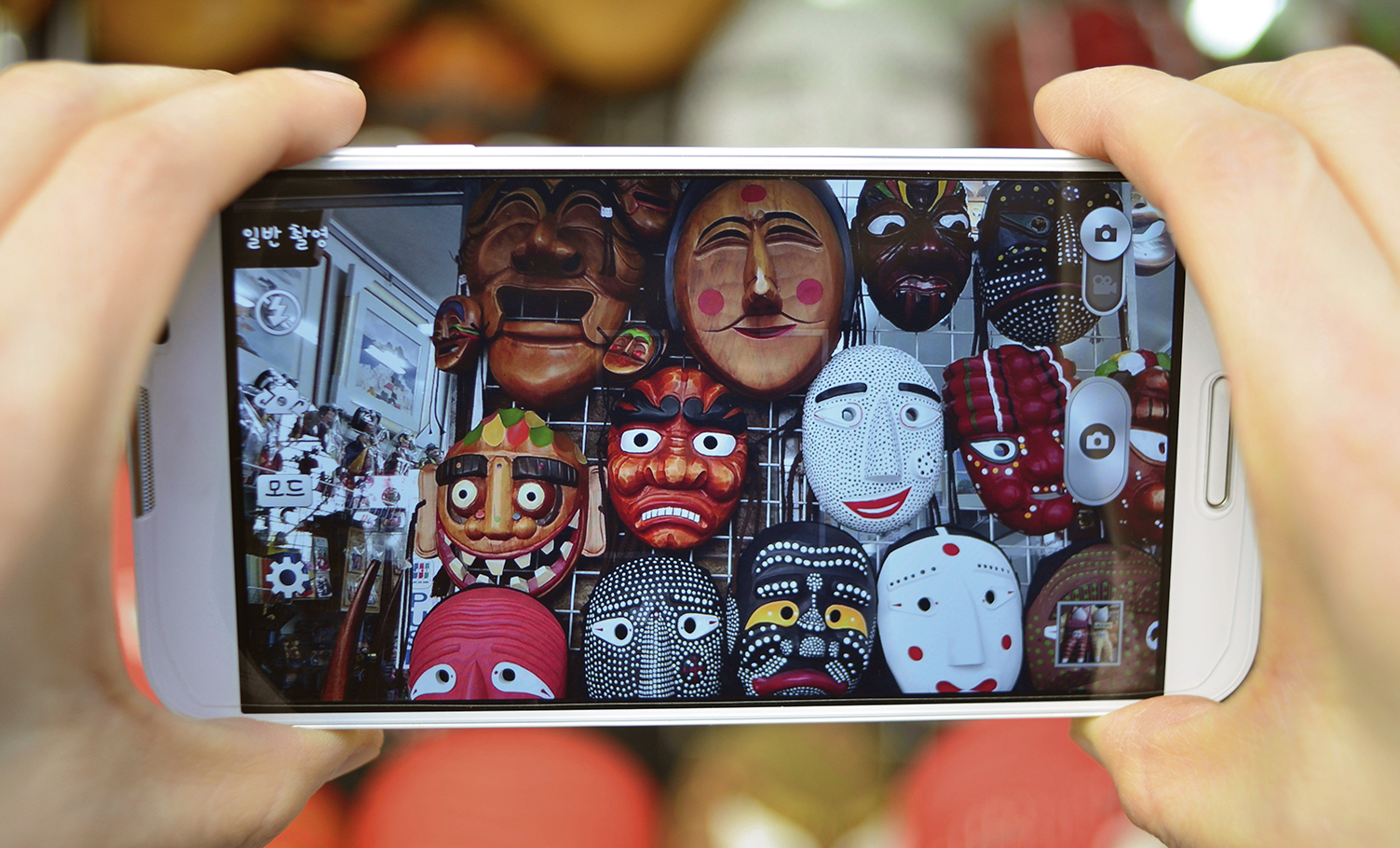
Every tal reflects each character’s personality. © pixta
Talchum speaks volumes about Korea’s animist past. Koreans long ago believed that spirits were found everywhere — in the rivers, mountains and most importantly the fields.
Appeasing benevolent spirits, they thought, could guarantee a good harvest and burning the masks after their use would win yet more agricultural favor from supernatural forces.
Most talchum performances tell the story of a young bride who dies just after her wedding, later returning to her village as a well-meaning spirit. Supporting characters include a malevolent tax collector and a butcher.
Although there were originally over a dozen characters in the performance, the stories told in talchum were never written down, as they were performed exclusively by illiterate peasants. The stories were instead passed down from generation to generation, living only in the collective memories of its actors, dancers and spectators.
Perhaps another reason so little is known about talchum — and why villagers were so keen to burn their masks after performances — is that the mask dance genre was decidedly anti-establishment in nature.
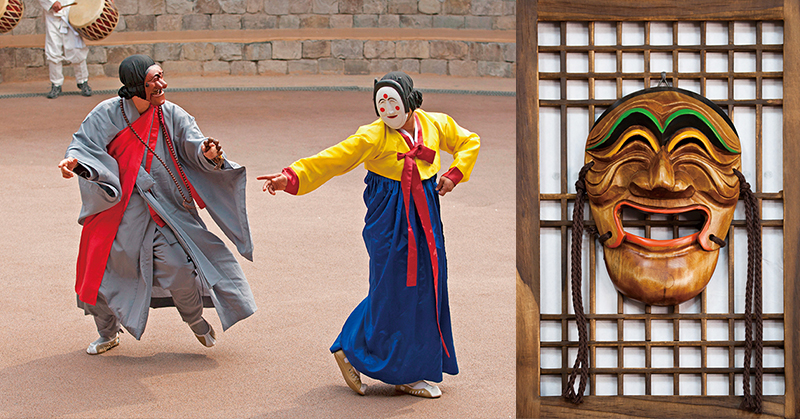
(Left) Unlike masked performances in other nations, Korean masked performers interact with the audience while on stage. © pixta
(Right) A hahoetal hangs on a traditional window. © imagetoday
Dance was a way for villagers to vent their frustrations with their overlords, being full of biting social commentary. Talchum heroes were all oppressed village folk and their villains were greedy and oppressive nobles, degenerate monks, and grumpy, snobby and ivory-tower scholars.
One beloved tal character, for instance, was a vengeful monster with a voracious appetite for eating nobles who mistreated commoners.
Nobles and both the priestly and scholarly class, all of whom frowned on tal culture, were de facto excluded from it. As such, Korean historical records, penned mostly by scholars, kings and monks, are almost silent on the subject oftalchum.
The oral tradition of talchum storytelling makes it unique in Korean culture. As there was no script involved, performers would inevitably improvise dance moves and dialogue, making minor impromptu adjustments to storylines as they went.
And that meant that if you lived your entire life without leaving the village of your birth, you might see hundreds of talchum performances, though never the same exact performance twice.
Subtle Overtones
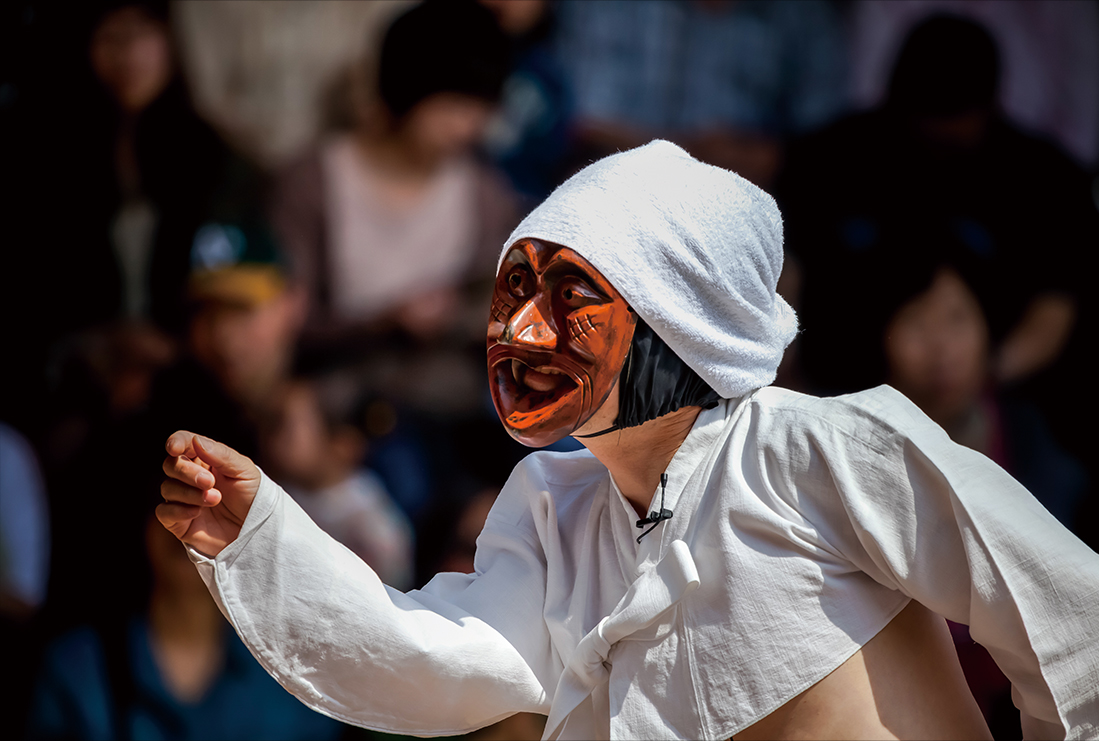
Talchum (mask dance) is a candidate for inclusion (2020) on the list of UNESCO Intangible Cultural Heritage. © imagetoday
Though talchum was invented and performed by illiterate, uneducated and low-born folk, it was nonetheless an extremely sophisticated and nuance-laden tradition.
For example, the mask of the bride in the Hahoe Mask Dance bears the blushing pink cheeks of a young bride. Yet a closer look shows an expression that is unmistakably tinged with sadness.
The movable jaw pieces on most masks were key as they allowed actors to be remarkably expressive during performances, with mouths moving up and down with each line adding realism to the fantasy.
In modern Korea, talchum performances are relatively difficult to track down outside of Andong. But delving into tal culture is extremely rewarding. You can find recreated talchum performances in a number of folk villages around the country. And Insa-dong’s traditional wood craftspeople still create the most magnificent tal in the world, elusive items that once turned ordinary villagers into villainous fiends, dashing heroes, and magical and mythical beasts.
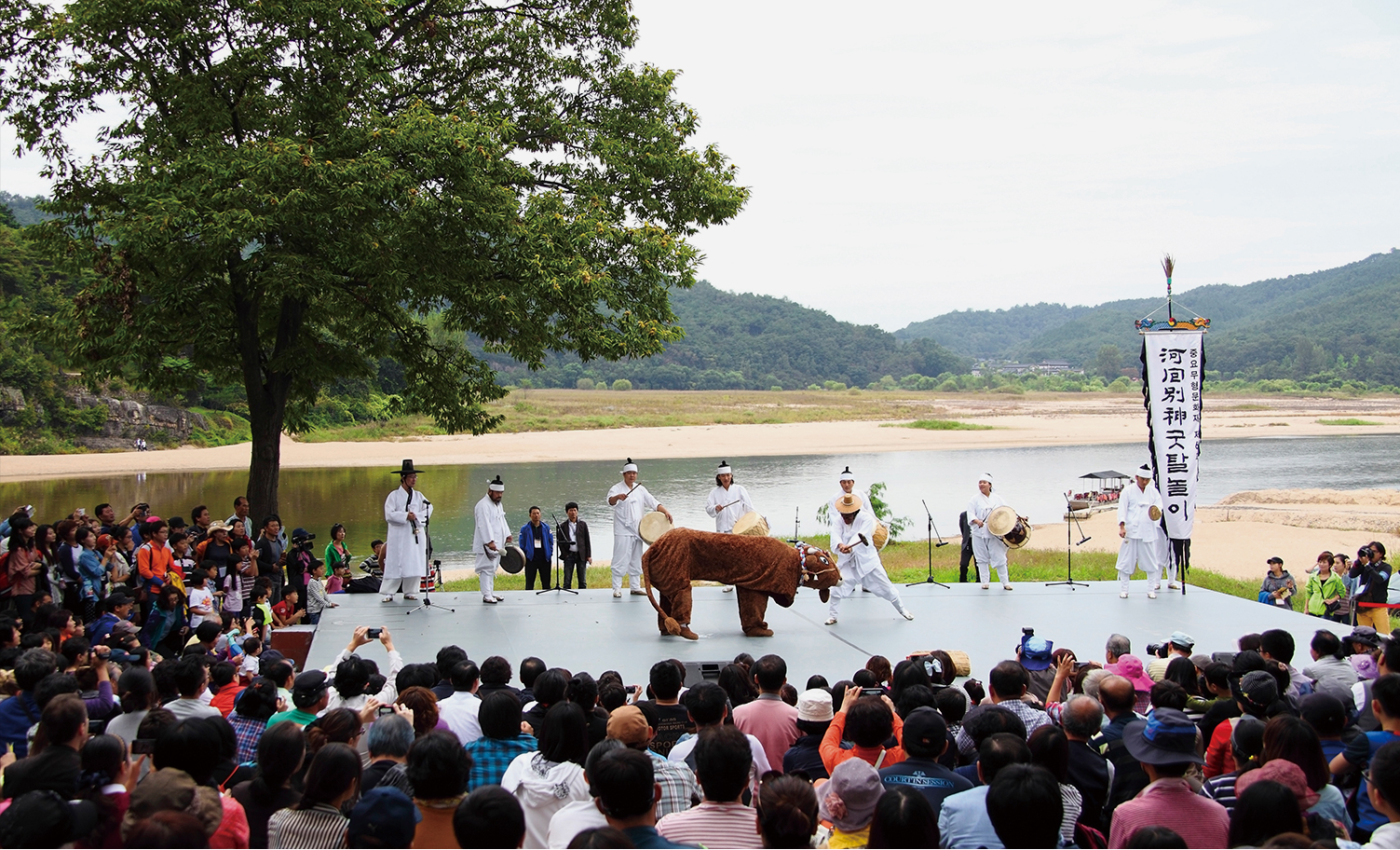
Laypeople appear with a cow to put on a specific genre of a hahoetal performance. © pixta




